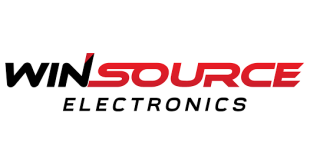
In addition to the AFE7225, the 12-bit AFE7222 is available for lower bandwidth, power-sensitive applications. It integrates a dual 65-MSPS ADC and dual 130-MSPS DAC and uses only 398 mW in full-duplex or 212 mW in half-duplex receive mode at full speed.
With both devices integrating more digital signal processing capabilities than similar AFEs design flexibility has been enhanced according to TI. They are the only mixed-signal AFEs with independent transmit and receive, 32-bit numerically controlled oscillators (NCOs), serialized LVDS input/output options, and independent transmit/receive quadrature modulation correction for gain, phase and offset imbalances.
Both devices consume only 12 mW of power in deep-sleep mode with a wake-up of only 13 us, or as little as 120 mW in light-sleep mode with 5-us wake-up time.
The dual ADC achieves 70 dB SNR, while the dual DAC achieves an adjacent channel leakage ratio of 75 dB with a 3G W-CDMA cellular signal.
Signal processing reduces FPGA gate count requirements, interface speed and cost: Both feature independent transmit and receive digital block up- and down-conversion with 2x to 4x interpolation, 2x decimation, coarse and 32-bit NCO frequency mixers; digital correction of gain, phase and offset for quadrature modulation receive and/or transmit; and a peak/rms power meter.
The dual 12-bit auxiliary DAC and dual-input 12-bit auxiliary ADC eliminate the need for a separate monitoring and control device, reducing board space, power and cost.
The AFE7225 and AFE7222 can be used in heterodyne or direct-conversion radio architectures. For heterodyne radios, a single DAC channel in the AFEs can be used to create an intermediate frequency up to approximately 100 MHz for transmit, and a single ADC channel can be used to capture IFs of more than 300 MHz, with the unused channels shut down to conserve power. For femtocell base stations, the AFEs provide macro-cell performance when combined with high-quality RF components.
 CIE Components in Electronics
CIE Components in Electronics



